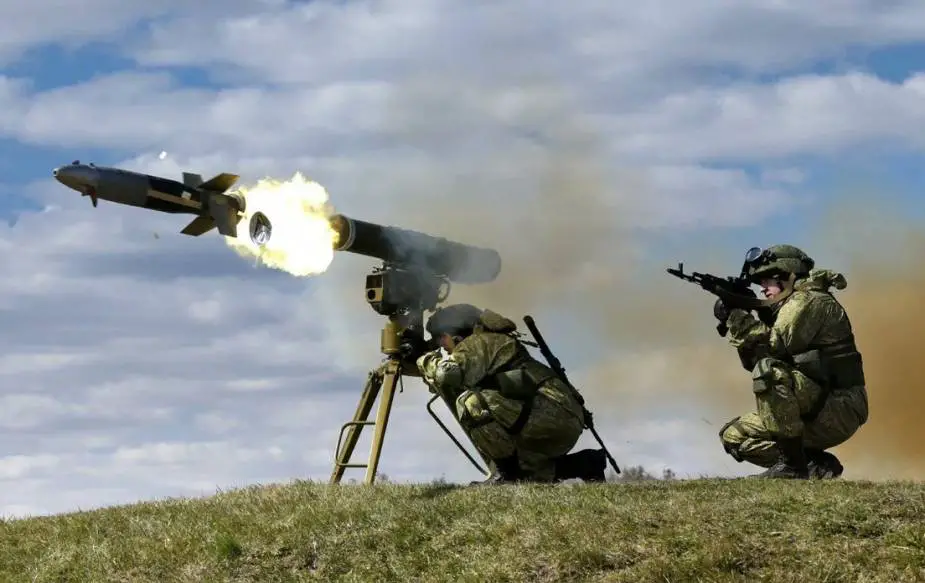Breaking news
Russian Kornet-D1 ATGM nearing completion of last live-firing tests.
Rostec has tweeted that the Kornet-D1 anti-tank missile system for the Russian Airborne Forces is undergoing the last stage of firing tests. The system is a development of the Design Bureau of Instrument Engineering. Academician A. G. Shipunov (part of the Rostec High-Precision Complexes holding).
Follow Army Recognition on Google News at this link

Live-firing of a Kornet-D1 missile (Picture source: Twitter account of Rostec)
The Kornet (Russian designation: 9M133; NATO reporting name: AT-14 Spriggan; export designation: Kornet-E) is a man-portable Anti-Tank Guided Missile (ATGM) system. It was first introduced into service with the Russian Army in 1998. The Kornet consists of a 9P163-1 tripod launcher, 1PN79-1 thermal sight and missile container launcher unit 9M133 that can be carried and operated by a two-man team.
Since its entry into service in 1998, the Kornet missile has continued to be improved with the versions Kornet-D, Kornet-E, and Kornet-EM. Kornet-D1 can destroy not only tanks and armored targets (1,100 to 1,300mm armor) , but also air targets. The maximum firing range has been increased from 5.5 to 10 km.
The Kornet-D anti-tank guided missile is a third-generation anti-tank missile that was designed by Russia's KPB Instrument Design Bureau and introduced at a defense exhibition in 1994. It was designed to replace the AT-5 Spandrel of the 1970s. The Kornet-D system consists of a missile with a launch tube, a thermal imager and a tripod for launching by infantry. Together, the launch tube and missile weigh 63 pounds (29 kg), while the launch tube alone weighs 59 pounds (27kg). The thermal imager weighs 24 pounds (11kg). The tripod weighs 42 pounds (19 kg). Although the Kornet-D can be used by infantry forces, the weight of the missile system predisposes it to being launched from a platform on a vehicle.
The Kornet-D uses a SACLOS (semi-automatic command to line of sight) guidance. The operator locks on to a target that has been illuminated by a laser. The missile then travels along the line of sight to home in on the target. It can engage targets up to a distance of 6,015 yards (5,500m), half the range of the almost-ready D1 version.
The Kornet-D can fire either a HEAT warhead or an explosive thermobaric warhead. The HEAT warhead can penetrate up to 47 inches (1,200mm) of armor and can defeat tanks with explosive reactive armor. It can also pierce reinforced concrete structures up to 11.5 feet (3m) thick. The explosive thermobaric warhead has the explosive power of 22 pounds (10 kg) of TNT.



















